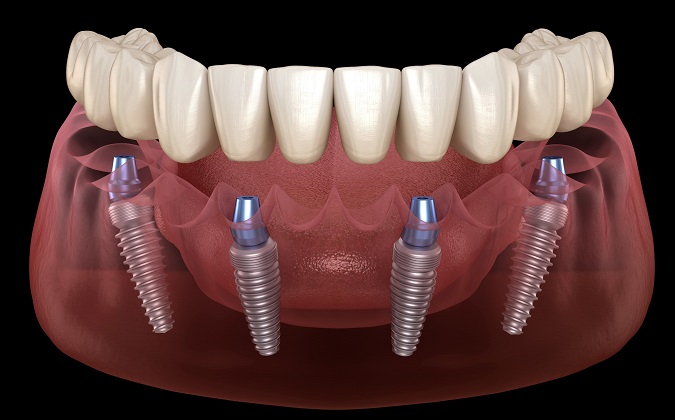If your dentist has spoken to you about dental implants, you may be wondering whether or not they are the right option for you.
Typically, a dentist will offer such a tooth replacement option rather than just fillings, if you have one or more missing teeth, healthy oral tissues, and are willing to commit to several months of healing and treatment for the beautiful final result.
But one of the first questions you might have regarding dental implants is how are they fitted? Read on to find out.
Preparation for Dental Implants
Before you get to the installation process, there is a bit of preparation that needs to occur first. This includes a comprehensive dental exam involving 3D imagery and X-rays to form a model of your jaw and teeth.
Your dentist will also review your medical history and form a treatment plan that goes through how many teeth you are replacing and your jawbone’s condition.
The Stages of Dental Implants
Unlike a filling that tends only to be one procedure, a dental implant fitting has several steps. But even though it’s not a near-instant process, it can be worth it when you’ve got a mouth full of pearly whites once more.
The steps within the dental implant fitting process can include:
- Removal of any damaged teeth where implants are going
- Preparing the jawbone (sometimes with grafting)
- Dental implant placement
- Healing and growth of your jaw bone
- Abutment placement
- Artificial tooth placement
Bone Grafting
Not everyone’s jawbone will be thick enough or hard enough for dental implants right away. Therefore, your dentist or oral surgeon might recommend a bone graft before dental implant installation can take place. This involves using bone from another part of your body to strengthen and form your jawbone and promote bone growth.
Placing the Implant
This procedure involves an oral surgeon cutting your gum to expose the bone. They drill into the bone to create a hole to install the metal posts for your artificial teeth.
Bone Growth
Once your surgeon installs the metal posts for your dental implant, you have to play the waiting game. The jawbone starts to grow and joins the surface of the implant. It can take a few months but will ensure you have a sound foundation for your new tooth or teeth.
Abutment Placement
The abutment is the component the crown attaches to. This minor surgery involves reopening the gum to expose the implant before attaching the abutment to it. The gum tissues are closed around it but not on top of it.
Installing the Artificial Tooth
The last step in the dental implant installation process is the crown’s addition – your artificial tooth. This takes place once your gums have healed.
Your dentist makes an impression of your mouth and teeth to make sure they can be completely accurate with the creation of your artificial teeth. You can then choose a removable or fixed tooth or a combination of both. Your dentist may recommend one or the other to suit your unique circumstances.
After dental implant installation, you can expect facial and gum swelling, bruising, pain, and minor bleeding. These are all common symptoms and should fade within a few days. If you notice any extreme discomfort, contact your oral surgeon. Otherwise, you can then start enjoying your brand new implants!

